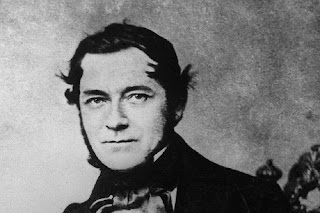Exactly 200 years ago Robert Bunsen was born. The man who invented the Bunsen burner, was a creative multi-talented and more than a naturalist.
Robert Bunsen is one of the most important scientist of the 19th Century and many generations of students a term. The few memories that virtually every student has the chemistry class, one of course, the Bunsen burner. The burner is only a tool for chemical reactions with high heat to bring up to speed, but his blue flame appears to leave an impression. The eponymous luminous Bunsen burner invented, among other technical instruments in 1855.
Robert Bunsen is one of the most important scientist of the 19th Century and many generations of students a term. The few memories that virtually every student has the chemistry class, one of course, the Bunsen burner. The burner is only a tool for chemical reactions with high heat to bring up to speed, but his blue flame appears to leave an impression. The eponymous luminous Bunsen burner invented, among other technical instruments in 1855.
Robert Wilhelm Bunsen was a professor of chemistry at Marburg, Breslau and Heidelberg. He was the son of literature professor Christian Bunsen on 30 Born March 1811 in Göttingen. His childhood and youth were spent in northern Germany. After studying in Göttingen, he was formerly a professor in Marburg and Breslau before he came to Heidelberg. In the Neckar City, he lived until his death in 1899. "It lives here in Heidelberg heaven," he wrote enthusiastically after he had assumed in 1852 a professorship in the Neckar city. The relevant ministry does not know, "what do you all for the sake of me. I often fearful and anxious, as I am to meet such great expectations." This concern, however, was less well founded.
Robert Bunsen was brought far more than just a manufacturer of laboratory instruments. He has, among other things, the materials in the black powder chemically analyzed and compared with the substances in the gaseous explosion products. He was able to explain chemical processes in explosions. His passion for explosives he was soon doomed: An uncontrolled violent reaction injured his right eye, Bunsen went blind, partially.
The list of his discoveries is impressive. He identified the processes involved in iron production in blast furnaces and found an antidote to arsenic poisoning. He put pure metals by electrodeposition from her saline solutions (electrolysis) and developed the carbon-zinc battery (Bunsen element). Extremely important to promote its development was the spectral analysis. With whom he could tell from the characteristic colored lights from heated materials, which are chemical elements present in the sample.
Ad
This light is directed through a gap on a prism or grating, and then separated into its components. From the wavelengths of spectral lines, certain substances can be determined. For astronomers, this invention meant a revolution. For the spectral analysis also makes it possible to determine the chemical composition of celestial bodies.
Very important was the production of metals by electrolysis of molten salts by the chemist. Bunsen isolated in 1860 from 30 tons of Bad Dürkheim mineral water, a metal that he called cesium. The element rubidium has also been discovered by Bunsen. Also the second most important tool of chemistry teacher is from him, the water jet pump. In the breaks from the tap water shooting out of the air molecules with a lateral pipe in the sink, this way you can create a connected system in a vacuum.
In the USA, is celebrated every year on his birthday of the "Bunsen Burner Day.











